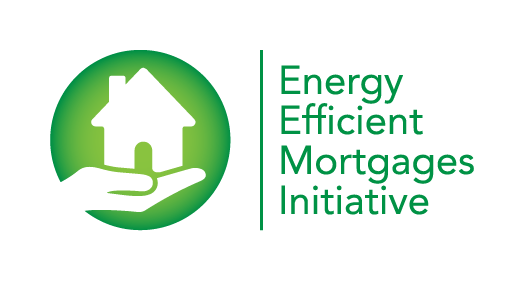
Developing technical due diligence for valuers: towards additional information for lenders


By Sarah Sayce professor of University of Reading and Zsolt Toth, External Affairs & EU Liason Manager, Europe RICS
Valuers act in accordance with the instructions they receive and the requirements of their professional body. As energy efficiency is likely to present a lower risk in terms of value moving forward, it is therefore a risk factor to any loan. Under prevailing client instructions, the valuer will normally be asked to comment on some of the most common risks to value in relation to the property and its general suitability for a loan, while energy rating is not normally a specified risk. However, some lenders, believed to be a growing minority, are now asking for information in relation to energy ratings and energy efficiency if such data is available.
It is from this starting point that the EeMAP commenced. Discussions with banks, valuers and professional bodies revealed that greater clarity and standardisation of instructions to valuers, with respect to reporting on energy efficiency, will assist lending institutions to develop a clearer and more explicit understanding of the potential risks associated with properties that could be subject to value depreciation due the building’s energy characteristics.
For this to happen there is a requirement to work with all the stakeholders to establish both how the instructions could be clarified and how appropriate information could be recorded and reported back to inform lending decisions. Earlier this year, we developed a draft checklist of information relating to building inspection and valuation which is intended to pilot as a possible extension to the instruction, inspection and reporting protocols for valuers.
The valuation checklist: an enhancement to the due diligence process
Under current due diligence processes, energy efficiency data should be collected and considered, where it is available and used for the assessment of Market Value only where comparable evidence supports it. However, by an awareness of the potential implications of sustainability and energy in the future, the valuer should be in a position to offer pertinent advice where data is available, if so instructed. The purpose of the draft checklist, therefore, is four fold; it is to:
- provide a potential extension for instructions for secured lending;
- enable valuers to reflect upon the building characteristics that impact on energy efficiency and form a judgement as to whether such characteristics present a risk reduction or increase to the security of the asset for the loan moving forward;
- Engender greater awareness of energy matters by valuers and encourage participation in upskilling;
- Build awareness of energy efficiency risk among the banks’ risk assessment departments, improve their skills of how to interpret valuation and EPC reports as well as learn how to challenge valuers in case of incomplete valuation reports.
Testing the checklist prior to the Pilot phase: what we hear from valuers
Given that the responses to the public consultation carried out earlier the year, whilst useful, could not give ‘fine-grained’ feedback on the checklist, semi-structured discussions with valuers operating in different EU Member States have been conducted. The discussions with valuers provided useful confirmation of previous findings but also added depth of insight as follows:
I. Instructions from clients in respect of energy efficiency.
The interviews confirmed that in general banks only required a report on the EPC – if indeed they require anything in terms of energy. Although it was reported that some valuation reports contain comments on energy efficiency related risks and benefits, many lenders, in practice, do not take account of these considerations. No valuer reported that banks ask for comments on the risks posed over the life cycle of the asset. These opinions underscore the previously recorded findings and point to the need to engage banks as commissioning clients.
II. The use by valuers of existing guidance during their due diligence and reporting processes
The valuers interviewed work across a range of countries, it was confirmed that valuers should be reflecting energy efficiency but only if there is a discernible value attached to it. In Germany, the requirement goes further with regulatory standards already requiring valuers to reflect energy efficiency as expressed in: maintenance costs, yield, rent levels, ease to rent, etc. However, even if energy efficiency is taken into account it is difficult to extrapolate; partly as there is insufficient real data, a point that was made very strongly in relation to Italy. The lack of data was a persistent theme with the view expressed that in some cases valuers do not even have EPC data available.
III. Views as to the draft checklist and explanatory notes
Opinions were extremely positive being described variously as “a great initiative”; “promising”; “relevant” and “a great rating tool which can help valuers”. Whilst to most valuers, there are elements within the checklist that are not being considered currently as part of the inspection/due diligence process, it was pointed out that some elements were already matters that the valuers routinely collected and indeed reported. However, in no case were those items considered in terms of their impact on value risk, as required in the judgements in the RAG rating. In summary, whilst some of the items on the checklist would require additional information being collected – or in some cases provided by a specialist energy assessor, many items could be so collected and judgements made. This would be a useful service to the client – if they were to request it.
IV. Suggestions for improvement of the checklist
First, there was a general acknowledgement that the checklist requires extra work on clarifying the indicators and additional guidance. Second, it was regarded as quite long and containing too many questions. As a consequence, it was suggested that it should it focus on those questions that most clearly have a risk mitigation impact; be mindful that some factors are already included in the valuation. Third, it was suggested that, as many valuers now use digital reporting and input direct from their site notes, to develop the tool such that it can tie in with the digital reporting templates would better assure its take up. This would lead to greater efficiency and reduce the requirements to ask for additional fees.
V. Constraints
Finally, valuers were asked about barriers and constraints to adoption of a developed version of the checklist. It was acknowledged that several existed, the key issues raised were:
- valuation report templates used by banks often do not allow to comment on energy efficiency and value and associated risk implications;
- many secured lending valuations are undertaken with the use of Automated Valuation Models (AVMs) and these cannot accommodate the checklist. The checklist is therefore predicated upon valuer physical inspections;
- Some mortgage lending products may act as a barrier to creating demand, such as as fixed-term mortgages without the possibility to change the terms and conditions;
- whilst the checklist could produce in effect a risk score, the quality and quantity of data in terms of energy is still so thin that the influence on market value will remain muted;
- the issue of liability of the valuer was raised; to mitigate this it would possibly be necessary to be provided with the energy audit;
- The question of additional fees for additional work was raised by several; clearly this needs address in order to achieve acceptance of the principle;
- Several valuers pointed to the need to upskill valuers and that an energy audit would be key to underscore the use of the checklist. The issue was equally raised that banks will also need to be educated in order to better understand valuation and EPC reports and to learn how to question valuation reports. The latter can be extended to internal key stakeholders within banks, including the first point of client contact, i.e. the customer services representative.
Concluding remarks
The interviews provided new insights, confirmed some concerns in terms of constraints in adoption that will require address but overwhelmingly provided positive support. Summarising the feedback received, it is becoming clear that many valuers are in fact already considering energy efficiency as part of their daily valuation practice and that many of them are already collecting data and information and this predominantly through EPCs and physical inspections.
However, the interviews and previous survey also showed that there are a number of structural barriers within the mortgage lending process that should be considered and addressed by banks during the EeMAP pilot phase.
Sitemap
Copyright © Energy Efficient Mortgages Initiative


The project DeliverEEM has received funding from the European Union’s LIFE 2023 programme under grant agreement No.101167431. The EeMAP, EeDaPP, EeMMIP projects have received funding from the European Union’s Horizon 2020 research and innovation programme under grant agreements No. 746205, No. 784979 and No. 894117 respectively
Privacy Overview
| Cookie | Duration | Description |
|---|---|---|
| cookielawinfo-checkbox-analytics | 11 months | This cookie is set by GDPR Cookie Consent plugin. The cookie is used to store the user consent for the cookies in the category "Analytics". |
| cookielawinfo-checkbox-functional | 11 months | The cookie is set by GDPR cookie consent to record the user consent for the cookies in the category "Functional". |
| cookielawinfo-checkbox-necessary | 11 months | This cookie is set by GDPR Cookie Consent plugin. The cookies is used to store the user consent for the cookies in the category "Necessary". |
| cookielawinfo-checkbox-others | 11 months | This cookie is set by GDPR Cookie Consent plugin. The cookie is used to store the user consent for the cookies in the category "Other. |
| cookielawinfo-checkbox-performance | 11 months | This cookie is set by GDPR Cookie Consent plugin. The cookie is used to store the user consent for the cookies in the category "Performance". |
| viewed_cookie_policy | 11 months | The cookie is set by the GDPR Cookie Consent plugin and is used to store whether or not user has consented to the use of cookies. It does not store any personal data. |

